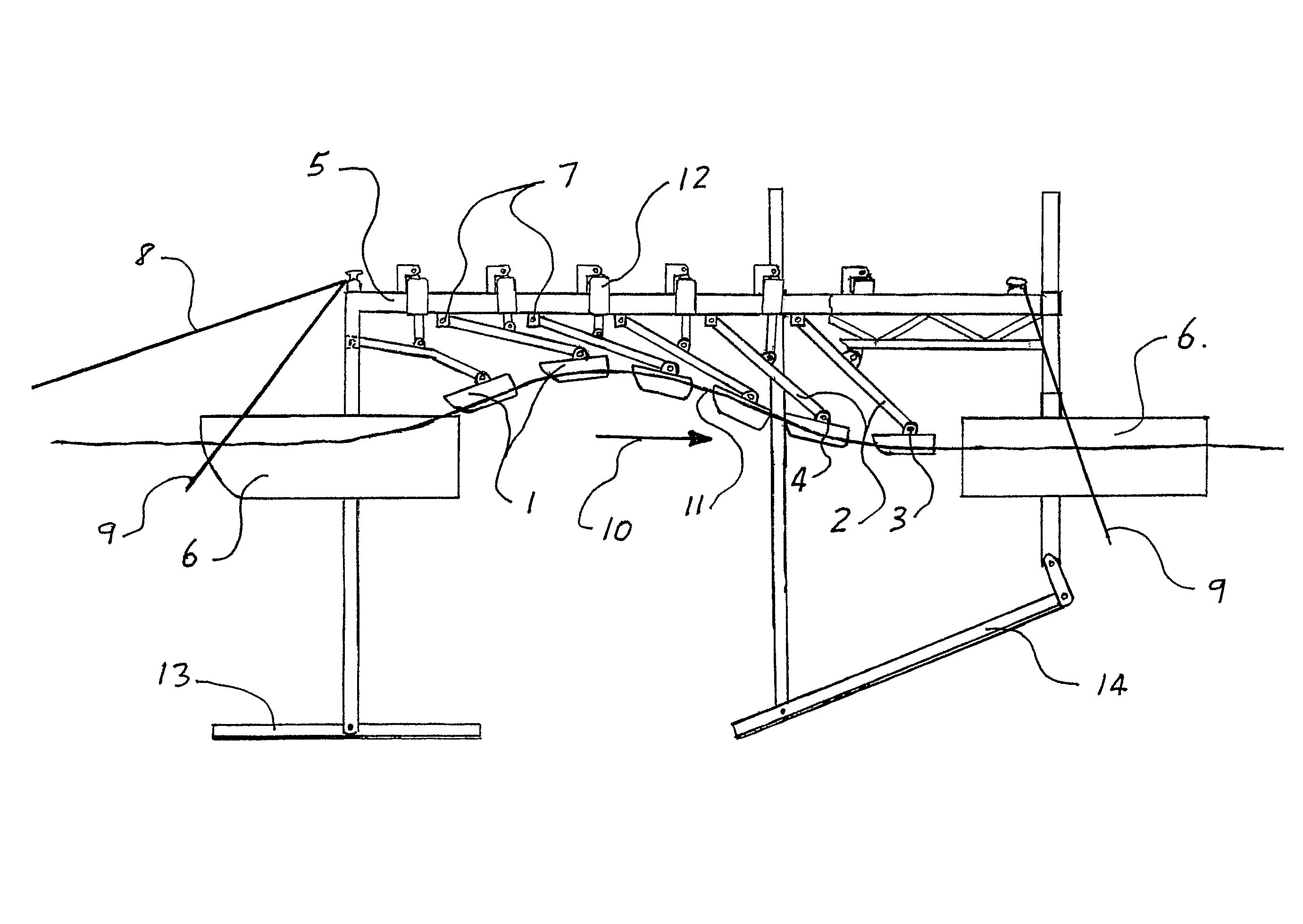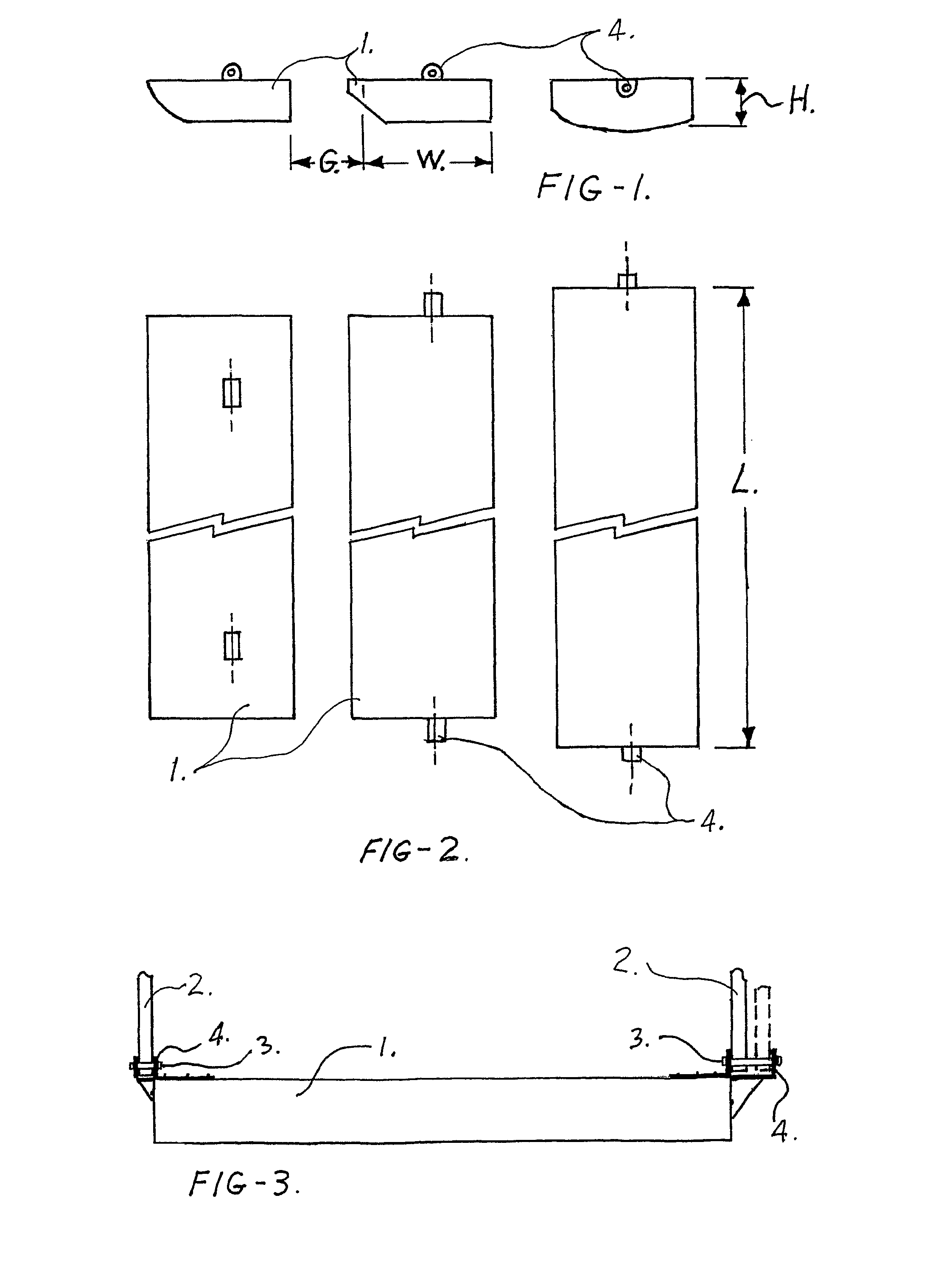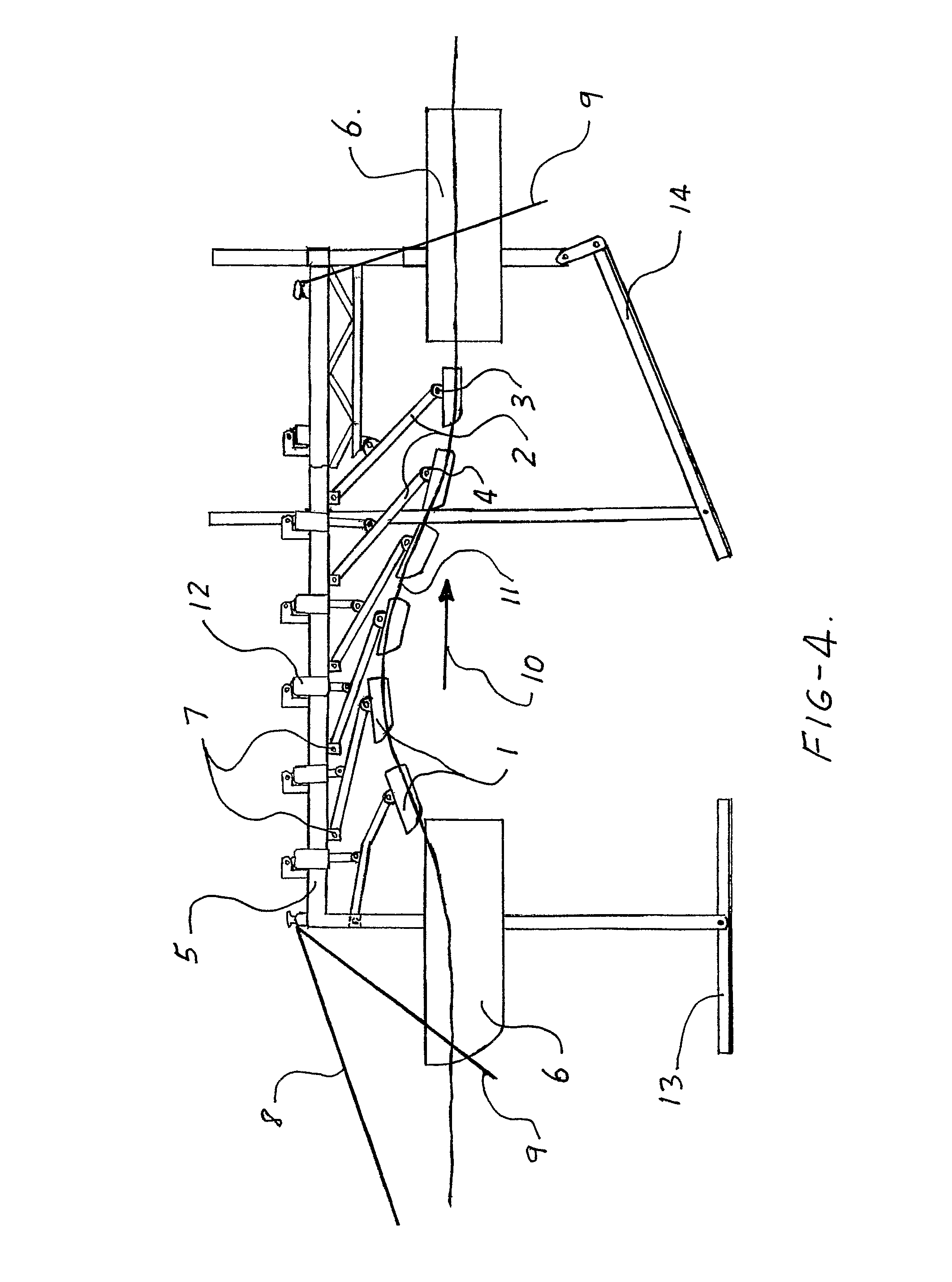Ocean wave energy converter
a technology of energy converter and ocean wave, which is applied in the direction of electric generator control, machines/engines, mechanical equipment, etc., can solve the problems of very small buoyancy volume to move up a wave, difficult to produce commercial levels of consistent electricity, and difficult to extract energy
- Summary
- Abstract
- Description
- Claims
- Application Information
AI Technical Summary
Benefits of technology
Problems solved by technology
Method used
Image
Examples
Embodiment Construction
[0025]The improved ocean wave energy converter illustrated in FIGS. 1 and 2 includes an array of floats 1 that illustrate some of the possible combinations of shape of the float and guidance arm float bracket 4. The length (L) of the floats is about 600% of the width (W) of the float. The float on the left in FIGS. 1 and 2 is the forward float of the array and has a rectangular back section and an elliptical front lower section with the guidance arm float brackets located in from the end of the float as shown. The float has a rectangular rear section and an angled front section for eighty percent of the height of the front side as shown on an angle of 50° from the top. On the float on the left and the float in the middle of FIGS. 1 and 2, the guidance arm float bracket 4 is wider than the width of the guidance arm so the guidance arm may slide sideways relative to the float. In the float on the right hand side of FIGS. 1 and 2, the float has a rectangular section on the top and the ...
PUM
 Login to View More
Login to View More Abstract
Description
Claims
Application Information
 Login to View More
Login to View More - R&D
- Intellectual Property
- Life Sciences
- Materials
- Tech Scout
- Unparalleled Data Quality
- Higher Quality Content
- 60% Fewer Hallucinations
Browse by: Latest US Patents, China's latest patents, Technical Efficacy Thesaurus, Application Domain, Technology Topic, Popular Technical Reports.
© 2025 PatSnap. All rights reserved.Legal|Privacy policy|Modern Slavery Act Transparency Statement|Sitemap|About US| Contact US: help@patsnap.com



